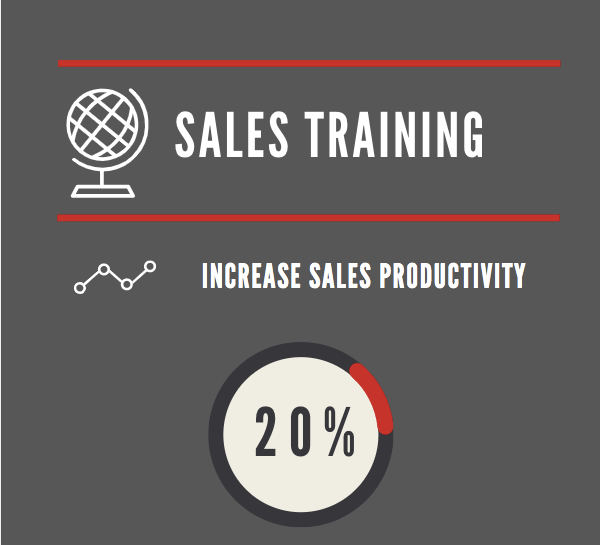Key Components to Sales Training Effectiveness
We’ve discussed the challenges that some organizations face in achieving fast and effective sales training, now let’s have a look at three components that can quickly and efficiently influence the productive development of any salesforce:
To maintain an effective, productive sales function, regardless of industry, sales training has become an industry in and of itself. In fact, the market for sales training was estimated at $2.5 billion in 2018 and growing. Sales training takes many forms and functions, but most experts agree on the basic criteria, and define effective sales training as “the personal development of skills and techniques related to creating and exploring new sales opportunities, as well as closing sales for an organization.”

First, train your sales team using a clearly defined structure and process. In most organizations, sales training is a case of too much information given in a short period of time. In the sales kick-off scenario explained in Part 1, the sales team needs to “crunch” learning into one day, never mind that during the other 2-3 days they are inundated with information from various departments like legal, marketing, HR, finance, product development, and others. Expecting salespeople to consume massive amounts of new data and information and hit the ground running is just plain unrealistic. However, the companies that provide clear, concise, and fewer materials (the basics tools of their trade and how to use them) seem to fair better with sales training and retention. Don’t overwhelm sales staff with pounds of new material. What works faster and more effectively, is providing a standard, organized set of materials with clear, concise instructions on how to use them.

Second, give your sales team the right tools to succeed. With so much information and so many different technologies to master (CRM, PowerPoint, lead databases, lead delivery mechanisms, online services, social media accounts, etc.) salespeople are expected to learn and master a variety of tools to do their job. Problem? Sales professionals are left with less and less time to actually sell and close deals. With over 41% of sales pros claiming their smartphone as their #1 sales tool, mobile sales enablement technologies (such as Beehivr) can change the training game for sales folks. Make sure your training continues whenever and wherever your salespeople travel.

Which brings us to our third point. Be sure to invest the appropriate amount of time and follow-through with sales training. One week of training a year (or one day) is not enough. Sales training and ongoing learning are critical to keeping salespeople informed and educated about your company’s products, services, pricing, market statistics, new research, competitors, etc., and mobile sales tools can help you accomplish this on a consistent and timely basis. Field Sales app like Beehivr encourage on-the-go or just-in-time learning for field salespeople anywhere, anytime. They also provide your salesforce with remote access to training content, quizzes, video coaching, gamification, and other tools to keep sales rep’s, BDR’s, (and managers!) in top shape for meetings and sales calls.
Our conclusion? After speaking with customers, we have found that sales training is not so much fast, but highly effective, and can increase your sales productivity by a noticeable margin – with some organizations reporting a 20% increase in sales productivity. So, if you’ve already invested in a mobile sales enablement technology like Beehivr, you’re halfway there. Be sure to leverage your investment in training and ongoing learning for a smarter, more productive and engaged sales team. Learn more about the Beehivr sales enablement platform.


